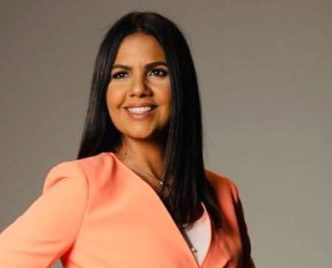Call to Action:
When a disaster strikes, do you want to help? If you live in the Kansas City area, you can sign up to be Early Response trained or attend a Chainsaw training but the first step is to become Safe Gatherings certified. Visit the disaster response page to learn more! If you live outside of the KC area, consider engaging in disaster response organizations in your area. For instance you can become CERT (Community Emergency Response Team) trained by your local fire department so that you can help professionals respond to a disaster in your own community. Visit the FEMA CERT website to learn more!
BIG IDEA:
Relief is the response everyone immediately thinks of after a disaster strikes. With that said, it's only one of five stages in a response -one that we often get stuck in - which can cause a whole host of other problems.
A few key takeaways from our guests:
- Send money, not "stuff" unless specifically requested by the community affected. Oftentimes donated items lead to a secondary disaster.
- Go only after the emergency phase. Trained volunteers are the most helpful - they know what to say and do.
- Disasters should be owned by the community and outside help should only happen if the community can't recover on their own.
- If you stay in the relief phase too long, it turns into dependency and more importantly, "it strips aways someone's dignity by taking away their ability to respond to their own crisis." Yikes! This is a healthy reminder to pay attention and listen to local leaders!
Acronyms, Definitions, and Rules... Oh My!
- The 5 "R's" /Stages of Disaster Response
- Readiness - be prepared on what to personally do during a disaster as well as being trained to help others
- Rescue - initial phase after a disaster where medical, fire, police, electric companies and others work to rescue survivors and make the area as a safe as possible for the next stage
- Relief - focused on providing survivors with their basic needs (water, shelter and food) and securing the disaster site so that recovery work may begin.
- Recovery - the longest phase of a disaster response where you work with survivors to find long-term solutions to fit their needs
- Review - evaluating the response for lessons learned to prepare for future disasters.
- The Rule of 10's
- A general rule of thumb in determining how long each phase should be is the "Rule of 10". This means that the relief phase is typically 10x the rescue phase and the recovery phase is 10x the relief phase. If that confused the heck out of you (totally understandable - it's like a riddle...), here's an example:
- A tornado strikes and it take 3 days to rescue the survivors. You can expect the relief phase (clearing debris, helping prepare food for people, tarping roofs, mucking out homes, sorting debris, etc) to last about 30 days. If the relief phase does actually take 30 days, then you can expect the recovery phase (repairing homes, businesses back up and running, etc) to last about 300 days. Glorymar mentions the recovery phase for Puerto Rico after Hurricane Maria is expected to last 10-12 years!
- One thing not mentioned in today's podcast is the importance of listening. Whatever phase you help respond to, you should always take time to listen to the survivors. To mentally and emotionally recover, they need to share their story many times. You compassion and listening ear is the most important thing you can do in any phase besides the rescue phase!
- Definitions
- United Methodist Committee on Relief (UMCOR) - is the disaster response branch of the Methodist Church.
- COAD (Community Organizations Active in Disaster) - is a local group of community organizations that coordinate emergency human services while working with partner agencies, social services, and the local emergency manager in response to a disaster. Each community should have their own COAD.
Meet the Voices

Dr Glorymar Rivera Báez works for ReHace, the social outreach division of the Methodist Church of Puerto Rico. ReHace stands for Rehaciendo Comunidades con Esperanza which in English means "Building Communities with Hope".
When Hurricane Maria struck the entire island of Puerto Rico, Glorymar played an important role in mobilizing local volunteers as well as groups of people coming from the contiguous United States. Glorymar has a passion to help people not only in the relief phase, but to holistically move them from relief into recovery through access to employment, mental & emotional support all while helping them build their capacity.
As always, thanks for listening!
Love, The Podsquad
